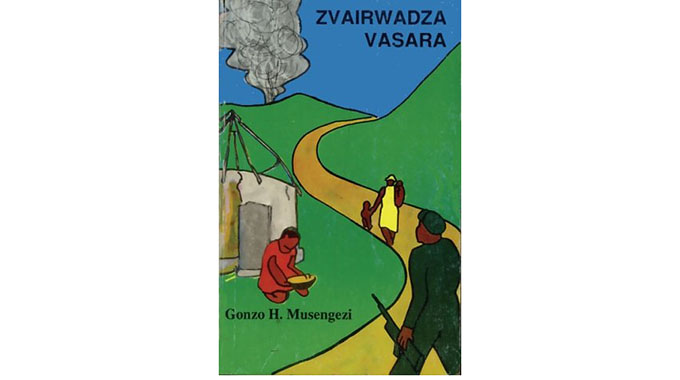Reading: Integral part of the learning process

Elliot Ziwira Senior Writer
The reading culture appears to be in recession and this reflects on the dearth of creativity across all interactive spheres. Writers do not seem to engrave our realities as they used to do, artistes do not chant and charm as they did in days of yore and journalists have lost their sizzling appeal.
Because reading is one of the major components of the English Language syllabi for both Cambridge and ZIMSEC and transcends subject boundaries, it is only appropriate for us to look at it in depth.
According to Bradney et al (1986), reading is an undertaking that needs not only be inevitably tackled, but one that has to be interpreted and perfected for it to be effective.
This is especially so because reading functions in different situations.
The reasons for reading are varied, therefore, it is a prerequisite for any effective communicative platform. Because each and every purpose for which the reading task is intended calls for a style peculiar to it, adaptability is imperative if an ounce of satisfaction is to be derived.
The crucial thing, therefore, is the identification of the purpose for reading.
This purpose may either be to research for an essay writing task, prepare for a seminar presentation; broaden one’s understanding in a particular area of study in preparation for examinations, entertainment or to find a specific piece of information encountered elsewhere.
If the purpose is comprehended, then it will be easier to select the reading type suitable.
From the foregoing, five main reasons for reading ensue; reading for enjoyment, overview, search reading, mastery and critical reading.
To many people reading can be a pastime and in that sense it may be presumed to be an entertainment vehicle. The reading of novels, magazines and newspapers is as informative as it is entertaining.
Reading for enjoyment does not require any analytical ability, neither does it elicit intellectual genius, as no questions are likely to be asked afterwards, because entertainment or enjoyment is only as good as it lasts.
Certain types of novels like Mills and Boon, Pacesetters and those by James Hardley Chase for instance, are read especially for their entertainment value, unlike classics like “Jonathan Wild” by Henry Fielding, Virginia Wolf’s “The Waves”, Dickens’ “Great Expectations”, Charlotte Bronte’s “Jane Eyre”, Charles Mungoshi’s “Waiting for the Rain”, “Things Fall Apart” by Chinua Achebe, and many others by African writers, that are read not only for enjoyment, but for mastery and critical analysis as well.
Thus, satisfaction can only be derived if the purpose is put to the fore before reading proper.
In some instances a reader may be tempted to read only for overview or getting the general idea of a text. Suppose one gets into a library or bookstore, and is not sure of the book that offers enough detail on a research topic or an essay, it will be tasking to read through all the available books before settling on the right one to use.
Therefore, skimming may be the best option. Overview as a type of reading arrests the problems that most readers, especially those reading for examinations, face.
They end up panicking and as a result read unnecessary information.
However, reading the introduction and conclusion may also not be the antidote that the doctor ordered, since they are usually conclusive and may ignore or leave out a lot of information on the subject, which may be expounded in the body.
In such cases search reading or scanning may be preferable.
In search reading, the idea is to limit the reading task to the location of a specific piece of information, which may be of importance to yet another reading task like mastery reading.
By using the index to determine if the information sought is dealt with and then scanning through the text for detail, one will be able to determine the relevance of the book for the task at hand.
Hence, scanning, like skimming or overview, aids or compliments other reading types such as critical and mastery or intensive reading, since time will be saved by avoiding unnecessary reading, for concentration will be drawn to relevant material and not being side-tracked by interesting and yet irrelevant detail.
Mastery or intensive reading creates intellectuals as the reading task is inspired by the predominant desire to learn the contents of a text thoroughly.
Reading for mastery, unlike reading for enjoyment, calls for effective participation of all faculties of the human brain since a high level of alertness is required because comprehension will be tested afterwards (Nunan, 1991).
Also, unlike reading for enjoyment, mastery reading calls for special skills. The SQR3 method, which invariably stands for Survey, Question, Read, Recall/Recite and Review, might prove invaluable in mastery reading.
The first thing, however, is to scan the material for an overall impression, which is yet another type of reading.
By taking a paragraph, section or chapter at a time, the text is surveyed for an idea of what it is about and as many as possible questions are asked.
The text is then read closely with particular attention paid to the questions raised. Whatever is read is then recalled or recited, possibly by writing short notes in one’s own words without referring back to the text.
Finally, the notes are reviewed or checked against the original text to ascertain accuracy. Although this may seem arduous, it will prove its mettle come revision time as there will be no need to reread the entire text.
The contents would have been internalised to the effect that a browse through the notes would be sufficient to remind one of what it is all about.
However, it is vital that one guards against making notes at the wrong stage as this should only be left for the recall/recite stage.
Focus should always be on the main points, with the beam on the topic sentence of each paragraph, and making sure that it is fully understood. The whole of the paragraph should not be ignored though, as there may be supporting details hidden.
The SQR3 method is not only useful in mastery reading as it can also be used in analytical or critical reading. If all the stages from surveying to reviewing are gone through, it may be easier to assess the text for arguments, evidence and conclusions because the text would have been fully comprehended.
Critical reading, therefore, like reading for mastery, calls for an eye akin to analysis as special skills are required.
This is averse to reading for enjoyment or overview where only general information, which may not be required afterwards, will be sought.
To determine the validity of an author’s claim or viewpoint, the critical reader, like the mastery reader, needs to put all his faculties on full alert as it is perilous for him/her to let his mind wonder away during the reading task.
Although it is important to adopt a reading style specific to a purpose to arrest the consumption of unnecessary detail, reading types are usually complimentary, as is the case in reading for overview and search reading on one hand and reading for mastery, search reading and critical reading on the other.
The adept reader, therefore, should know what he/she wants to achieve from the reading task at hand.
Reading is an integral part of the learning process, which, like breathing can only be avoided at one’s peril.








Comments